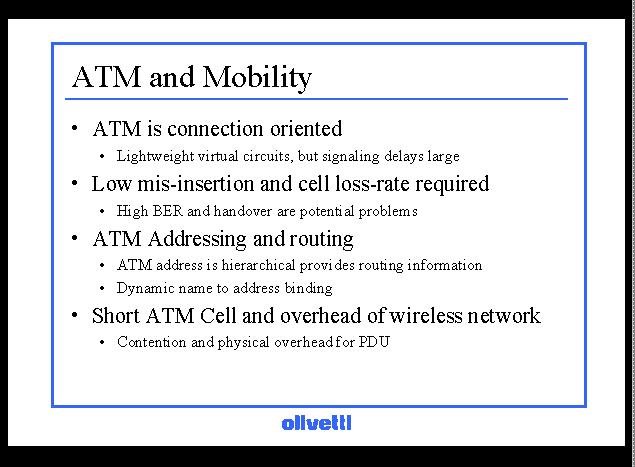 |

|

|

|

|
 |

|

|

|

|
Problems that we believe are associated with the use of ATM in a mobile environment.
ATM is connection oriented which does not sit well with a highly mobile system but the cellular telephone companies solve the problem so it is not impossible. The signaling messages in an ATM network are routed in a datagram manner but unfortunately all traffic for the circuit is routed along the same path. So some of the mobile IP approaches do not appeal.
In ATM, connections are lightweight - but signaling is potentially very slow. Current UNI implementations can typically take 10s of milliseconds per connection. This makes it difficult to use standard signaling techniques to implement mobility without seriously degrading real-time performance.
ATM makes assumptions about the cell-loss and mis-insertion rate. These assumptions are not necessarily easy to meet in a wireless network. Cell-loss is clearly a problem in a network with 10^-3 BER rather than the 10^-9 assumed in a typical wired network. Furthermore the fact that handover must be supported means that either cell-loss or mis-insertion of cells becomes likely.
The ATM address is hierarchical, and the hierarchical nature is used by PNNI to route signaling requests. A mobile which moves between locations with different positions in the hierarchy must be allocated different addresses if standard ATM connection routing protocols are to be used. This implies that the name to address binding for ATM must be dynamic enough to support this re-assignment of addresses.
The overhead associated with packet transmission is likely to be higher in a wireless network in comparison to a wired network. There is potential overhead due to contention in a shared medium and the physical nature of the channel, very large variations in signal level and requirement for power saving measures, make the efficiency of the channel a difficult problem